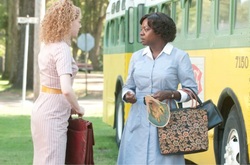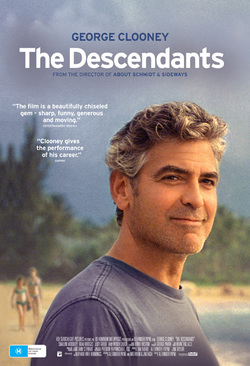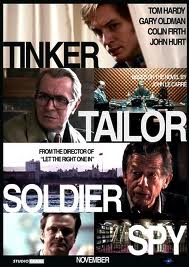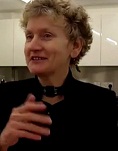
By that I mean the story follows two protagonists, Skeeter and Aibileen on their parallel journeys. However , it's also using preview flashback, opening on the the first act turning point (Skeeter's first interview with Aibileen when Aibileen has agreed to help with the book). We then flashback to the start of the story.
There are also brief flashbacks of the simple kind that I call 'flashback as illustration' - brief memories depicted on screen, for example, Skeeter remembering the maid, Constantine, who brought her up and was her mother figure.
What's particularly interesting is that the opening - which is actually the first act turning point, and after it we'll flashback to the start of the story - actually works very well. A common problem with using the first act turning point as your opening scene is that when the film returns to it (to the first act turning point) there is a kind of 'okay, so what?' sensation, and we feel as if we're starting a new film.
I'm not entirely sure why some films work and some don't when they open on the first act turning point . The Help certainly does. I think the answer is that opening on first act turning point and flashing back to the start will work if there are three elements in place.
The first is that the first act turning point scene that we witness is immediately very striking and unusual (in The Help, a wealthy white 1960s era girl from Jackson is interviewing her maid in the maid's home, which is instantly intriguing) The second vital element is that this scene is really the start of the film's main plot (what I call the 'action line') so when we return to it the film really surges forward.
The third - and probably the most important - is that the first act itself is actually useful plotwise. If you really don't need to know all of the information in the first act - for example, if you have a meandering normality or if your first act isn't really on the point of your story - then your best course of action is probably to ditch the first act as you have it and open the story just before the scene you you currently have as the first act turning point.


 RSS Feed
RSS Feed


